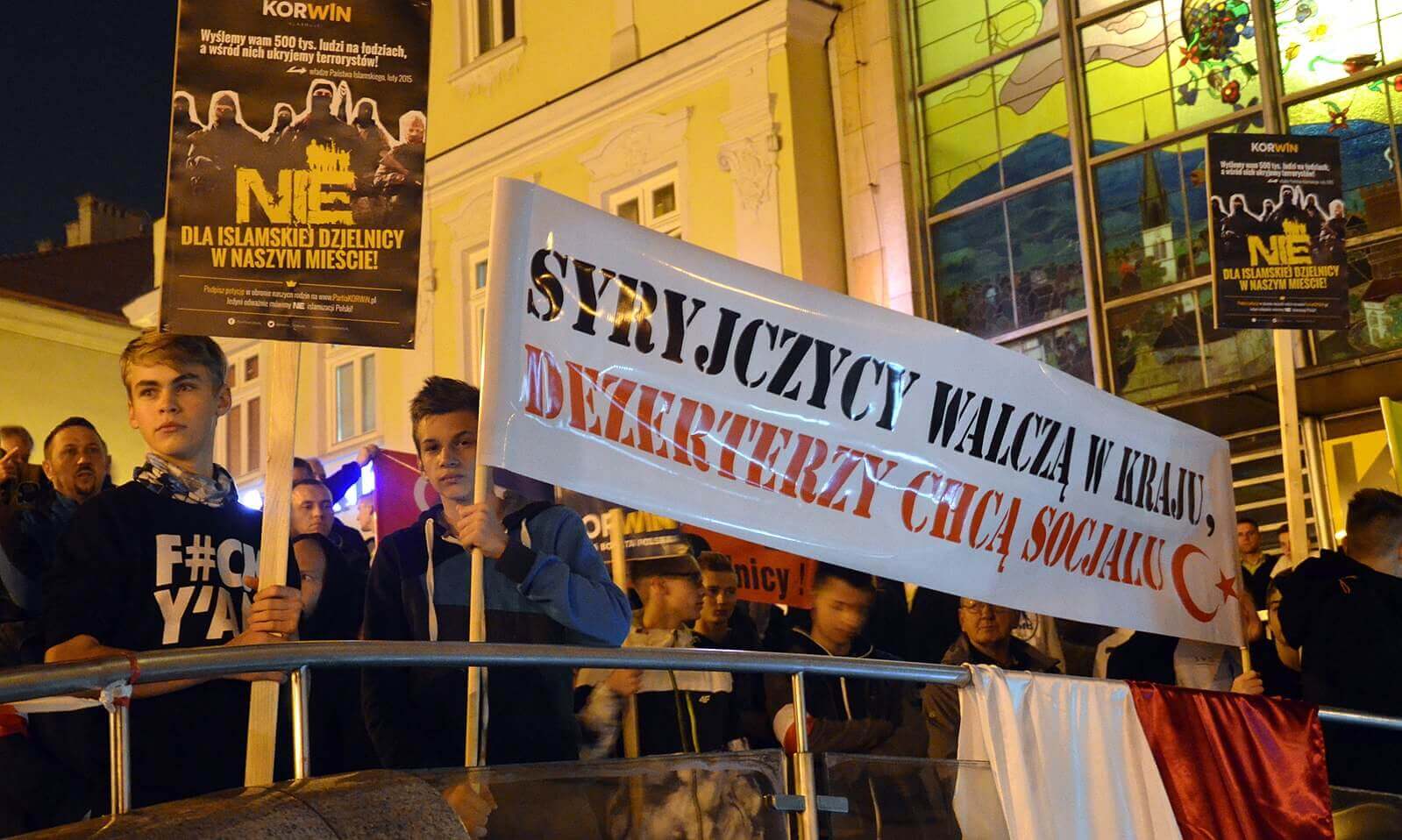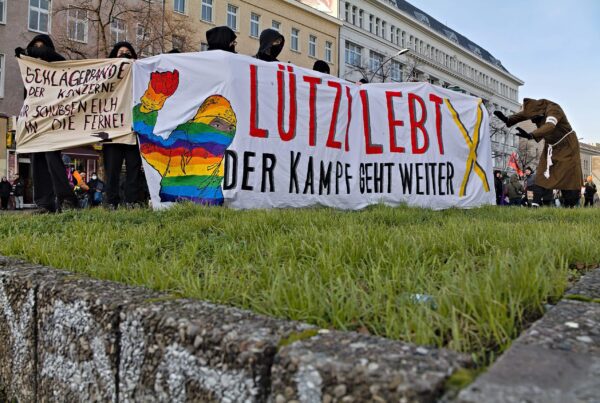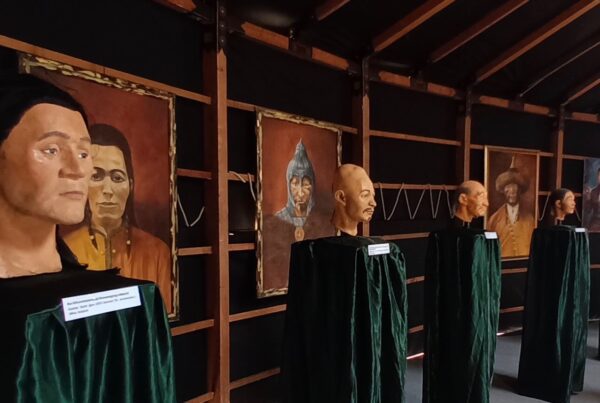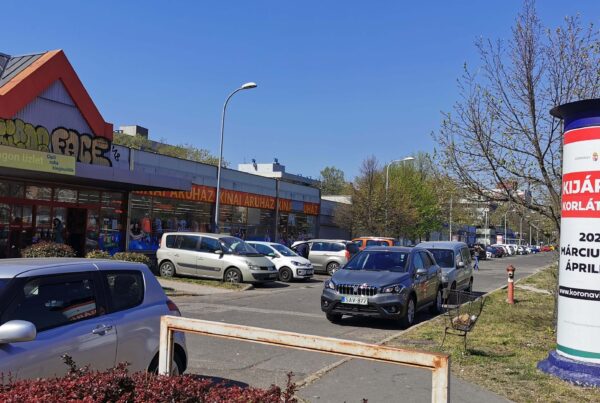Since the 2010s, culture wars have increasingly become the language of political conflict in Central Europe (CE). The last presidential election in Poland and Slovakia, and polarized general elections in Hungary, revolved around liberalism, gender ideology, the social legitimacy of public homosexuality, gay adoption rights, and abortion—much like in the United States (U.S.). All over CE, political stands on cultural issues now appear more important than positions on taxes, pensions, and budgets (when we leave out the war in Ukraine, of course).
The current conceptualization of “cultural wars” was first proposed by American sociologist James D. Hunter to describe right-wing populist strategies and recurring polarizing conflicts regarding changes of social norms and recognition of minority rights. But due to the seemingly liberal heritage of Communism in Central Europe the politicization of gender, abortion, and gay rights is rather unexpected. In fact, cultural conflicts there do exhibit discourses, and activist networks, and repertoire reminiscent of American culture wars. But it would be wrong to see them as an extension of U.S. culture wars. Depending on how we define them, Central European culture wars are in substantial aspects markedly different from the US case. The reason is not primarily the rather problematic legacy of Communism itself but the specificities of Central Europe’s post-communist history.
Culture Wars or Culturalization?
Conflicts about identity, values, and norms are part of ordinary politics. The term culture wars highlight a greater intensity, a polarizing quality, and an instrumental nature of newer conflicts over values. When Europeans were discussing whether to mention God in the preamble to the planned European constitution in 2003 and 2004, they divided along secular and religious, socialist, and Catholic lines. The issue prompted heated debates, dozens of amendments, Church interventions, and public lectures by prominent intellectuals questioning Europe’s intellectual and moral roots. It ended in a compromise: the preamble mentioned both Christianity and humanism. Like debates about euthanasia and stem cell research, the constitution project caused a confrontation about modern values and the place of religion in modern Europe. But unlike today’s culture wars, these debates appeared civil, the arguments were rational, and the outcome was a compromise adopted among a plurality of voices.
Recent conflicts about abortion, gender, and gay rights are markedly different. I understand culture wars as conflicts that are not meant to be resolved but, rather, that are fought to be won, typically by placing a symbol in a public space or a legislative change against resistance of the others. Culture wars do not entail negotiation, argumentation, or compromise seeking, but they are meant to mobilize using the image of a threatening enemy, such legally failing but politically “successful” referenda on same sex-marriage in Slovakia and Rumania. The concept of culture wars so reflects militancy, zero-sum beliefs, an antagonistic view of politics where one group always benefits at the expense of the other, and a framing of social change (or resistance to it) as a threat and indicative of decline.
Yet the notion of culture wars is also an actor’s concept, a labelling tool of an actual culture war. It operates with a cultural or identitarian “us” versus “them” divide and brings about the assumption that there is a duality between groups—i.e., conservatives and a liberal Hungary; Poland A and Poland B, a “Prague coffeehouse” and a Czech beer house, an urban Slovakia and the “empty East” opposing each other. By repeating the assumption of an inherently polarized society, cultural warriors preclude compromise and incite and even perform such a division. Rare moments of respite—seen in the elections of a politician beyond the fray, such as Slovakia’s Zuzana Čaputová, or when a major crisis like the war in Ukraine silences major cultural warriors for a time—reveal that the talk of ideological division is an often effect of super-polarizing events.
Even in the absence of a well-defined and stable ideological polarization, the culture wars phenomenon confirms a stable trend towards a culturalization of political cleavages and conflicts. Politics dealing with socio-economic issues, that is, conflicts over redistribution (i.e., taxes), reform projects (i.e., pensions, healthcare, education, and decentralization) and visions of society (i.e., type of growth and investment, and climate change related policies), are regularly colonized and side-lined by conflicts over social norms and values. Substantial conflictual episodes are increasingly framed in cultural terms, that is, as expressions of conflicting cultural stances and group identities.
Unlike the U.S. where positions in the culture war have largely realigned with party politics, in CE (with the exception of Hungary) the picture is different. There are various kinds of purported militant identities in CE: besides liberals and conservatives, cultural conflicts involve positions of the past (“anti-communists” vs. “revisionists” of various kinds), on migration (“patriots” and anti-Islamists vs. “welcomers”, “sunshines”, and “do-gooders”), on national identity (Christianists vs. “denationalized cosmopolitans”), on gender (“traditionalists” vs. “genderists”) and on geopolitics (“Russophiles” vs. “Europhiles” and “Russophobes”). There is, in fact, a plethora of conflicts defined in cultural terms. that only sometimes coalesce into super-polarized forms (e.g., during presidential elections)
Three Fields of Culture Wars in Central Europe
This wide range of cultural stances has evolved in time and invested various issues that can be subsumed in the following typology of issues: politics of memory; politics of identity; and politics of morality.
The so-called politics of memory is the oldest and most typically Central European field of culture wars that started in the mid 2000s. From Warsaw to Zagreb, these are public disputes over the legacy of communism, and over national victimhood and the legitimacy of Nazi-supported national states in the Second World War. These disputes have escaped academic circles to enter public spaces: during annual war commemorations, around crosses and statues in city squares, through provocations in popular culture, in amateur revisionist circles, in state sponsored institutions, and in parliaments. Polarization on behalf of the concept of the so-called “Polish camps” and “Polish” guilt, the controversial and sometimes outright revisionist rehabilitation of symbols and figures of the Slovak state, Croatian Ustashas, and Hungary’s Horthy regime have divided societies well before recent “morality wars”. They were used by political challengers and civil society actors to up-end the pro-European consensus on defining moral lessons of the past in terms of a response to WWII. Unlike much weaker memory wars in Western Europe, where liberals disclose and problematize the legacy of colonialism, memory wars in CE have been fought to “nationalize” memory regimes and reawaken victimhood after CE adopted the Holocaust-centered European moral framework of memory regimes. In other words, the politicization of the past allowed neo-nationalist figures to antagonize pro-European liberals and mobilize on emotionally charged issues.
The so-called politics of identity sparked the most sudden and transforming eruption in CE politics in 2015. The culturalized framing of the so-called refugee crisis created an unprecedented polarization. The issues of migration and Islam were void of any pragmatic consideration and were systematically framed by right-wing, populist but also centrist parties, while the media was branded as a threat to “national traditions” and “Western civilization.” The “civilizational” quality of the threat of Islam, i.e., Europe’s “Other”, the purported blindness of liberal elites towards it, and the opportunities of electronic communication, led to the politicization of previously apolitical citizens. Only liberal media, and dwellers of larger cities, non-parliamentarian left, civil society organizations and academia, parts of business reliant on the immigrant workforce, and a minority in the Church called (in vain) for humanitarian and pragmatic responses. Unlike previous memory wars, attitudes towards migration and Islam divided societies down to the family sphere and built a pattern of antagonistic, anti-elite politicization that would be reactivated half a decade later.
In the political sphere, the creation of a sense of danger and the framing of national identity in opposition to Islam and to so-called liberal elites or “Brussels” kept Islam and migration in the public debate for years. Migration and Islam became such powerfully mobilizing causes and toxic issues that none of the socialist or liberal parties dared to show any degree of openness to migration in order to pragmatically address asylum policy and the humanitarian catastrophe on the margins of Europe. Rather, the cultural framing of migration electorally strengthened populist politicians across the board and gave them an issue to instrumentalize in elections—even to nominal socialists such as Miloš Zeman and Robert Fico. Opposition to migration pushed many former socialists and liberals to the national–conservative camp. It also gave the Visegrád Group (V4) a sense of purpose—the defense of Europe against itself by the last defenders of “real Europe” and her national and religious tradition. This newly found self-assurance against Brussels introduced two new threatening “Others”—Islam and European liberal elites—and fostered the belief that civilizational identity is an issue worthy of a culture war.
Only conflicts in the so-called politics of morality somewhat echo U.S. culture wars. Since around 2013, mobilizations started on behalf of conservative social norms, the restriction of abortion, and opposition to gay rights. If many of the anti-abortion activists’ networks were linked to U.S. groups or inspired by the kind of legal advocacy that was developed in the U.S. culture wars, CE morality mobilizations have a European dimension. Major mobilizations have been linked to the Vatican discourse on “gender ideology”. This phrase was used by a host of influential Western European Catholic writers and by Central European Catholic hierarchy to project into the theoretical concept of “gender” a malicious intention to destroy sexual difference and to dissolve all social hierarchy and cohesion. Since 2013, right wing populists have joined in the systematic scare campaigns against “gender ideology” to justify opposition to gay marriage, to adoptions by gay couples and generally to the legitimacy of public homosexuality.
These mobilizations were instigated partly by conservative activist groups who were borrowing discourses (e. g., “anti-gender” rather than overtly homophobic or religious), visuals and repertoires (e.g., petitions, referenda, poster campaigns, and lawsuits), and goals (e.g., large scale mobilizations to change legislation) from transnational networks (such as the French “La Manif pour tous”, replicated in various CE “Alliances” for family and U.S. advocacy groups). National conservatives in power – such as Polish PiS, Hungarian FIDESZ and Slovak Sme Rodina (We are family) – have amply used the politics of morality both to mobilize their support base against liberal opponents and to gain control of cultural and academic institutions and of public administration. They were replaced liberal actors and policies by others who were signaling their political allegiance by using the talk of “family mainstreaming” rather than “gender mainstreaming” or by supporting nativism and “tradition” rather than universalism in social policies. ¨
The politics of morality is currently the strongest source of culturally framed confrontations in CE. There is an effect of amplification as cultural confrontations develop into confrontations between a broadening national–conservative camp and the “Other” sedimented in various culture wars. From internal enemies (such as national minorities and the Roma), recent culture wars have moved the target of nationalist activism towards a much larger image: a post-national EU, a multicultural Europe, and liberal global elites and their local representatives. Even there, attitudes towards Russia, NATO and the EU, and vaccination, divide the national conservative camp down the middle. Polish and Hungarian right-wing culture warriors famously clash on behalf of Russia, as do national conservatives among themselves in Slovakia and Czechia.
Shifting Political Conflict to the Right
As the overview of the various fields of culture wars shows, the term of “culture wars” remains too ambiguous and its use is ambivalent. In CE, culture wars cannot be easily defined as ideological confrontations between liberals and conservatives. Every country has developed its own mix of cultural battles whereby warriors engage in various fields culturalized conflicts: memory remains strong in Croatia and Czechia, while morality is a salient issue in Poland and Slovakia. Both PiS and Fidesz focused on WWII memory, anti-Islam, and gender at various times.
The ambiguity of culture wars comes from the fact that the purported ideological confrontation appears to be openly instrumental. Rather than being mere expressions of some anti-liberal backlash (an argument proposed by Krastev and Holmes), culture wars have become a style of politics focused on culturalized polarisation. As argued in a recent book by Barša, Hesová, and Slačálek, there is a specific context in which culture wars broke out in CE: the EU accession, the breakdown of liberal–conservative alliances, and increased competition on the right.
Central European countries have all experienced a rare political consensus from mid 1990s to mid-2000s (e.g., in Croatia between early 2000s and 2013). The goal of entering the EU and NATO was paramount for gaining a firm anchorage in Western economic and security structures. This symbolic aim was accompanied by the Europe-inspired transformation towards liberal democratic institutions, market economies, and the integration into the global economic system. All those processes were carried out by strong liberal–conservative alliances in which post-communist, socialist, Christian, and conservative parties fostered a stable liberal–conservative consensus. Once the goal of EU accession was accomplished, the programmatic void was not filled with another great vision. Rather, symbolic and normative consequences of Europeanization gradually came under scrutiny. The European memory framework that saw 1945 as a year of liberation was challenged by efforts to include communism and nationalize WWII memory. Liberal social norms had no history reaching back to the 1960s. They were often imposed through legal integration and had to be fought out by local civil society against local resistance. Western European struggles over multiculturalism started to be seen as a marker of “civilizational” decline for CE, where relatively recent ethnic homogeneity was consecrated as a pillar of young national states.
Most importantly, the liberal–conservative consensus on the right disintegrated from the mid-2000s onwards. As Anne Applebaum related about Poland, many conservative and nationalist groups and public figures in all CE countries have abandoned earlier liberal attitudes and have started distinguish themselves from liberals of the socialists and conservatives on traditionalist grounds. Increased competition on the right-wing spectrum has led to the struggle for the hegemony over national identity or Christian voice in politics all over CE. Because there was little socio-economic ground for a distinction, the fragmented right has resorted to cultural issues in their quest for political leverage. Importantly, these struggles on the right led to the mainstreaming of radical right issues (e.g., anti-Islam, anti-migration, anti-minority politics) now framed in cultural (religious) and not in racial or ethnic terms, and to the integration of the radical right in parliament politics across CE.
Covid, local climate-change-related crises, and the war in Ukraine brought new conflicts that, at first, seemed to stand free of the tendency to culturalize political conflicts in CE. Ukrainian migration, for example, has not been framed culturally and, except for Hungary, CE stands behind Ukraine. But as with earlier culture wars, polarizing sediments manage to play a part in later conflicts. Newer conflict lines may develop between those who support the EU, Ukraine, and their policies, and between those who are locally minded, whose cultural “Other” now includes the EU, migration and liberalism, globalized elites, or those who have little confidence in state institutions and blame the effects of Russia’s war on Western “intransigence.” A CE version of the “alt-right” may well be the new cultural warrior.
Zora Hesová is a lecturer at Charles University in Prague, Czech Republic, working on modern Islam and religion in European politics.
Photo: “Der anti-islamische Protest in Polen” by Silar licensed under CC BY-SA 4.0







